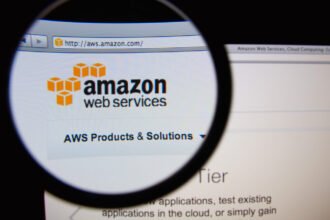Companies are investing more in big data than ever before. Last year, global businesses spent over $271 billion on big data.
While there are many benefits of big data technology, the steep price tag can’t be ignored. Companies need to appreciate the reality that they can drain their bank accounts on data analytics and data mining tools if they don’t budget properly.
We mentioned that data analytics offers a number of benefits with financial planning. However, the other side of the coin is that you have to budget properly to take advantage of data analytics tools. This means you need to work out an IT budget with your financial plans.
Developing an IT Budget is Crucial for Data-Driven Businesses
As big data technology leaps lightyears ahead, different industries are jumping on the wagon. It doesn’t matter if you own a manufacturing business, an ecommerce, or a retail shop, you have IT needs. And when you have IT needs, you also have an IT budget.
A survey report by Spiceworks shows that 66% of businesses are planning to increase their year-over-year IT spending. You might be one of them. But only increasing the budget is no longer going to cut it. You also need to optimize it. We plan to cover the ins and outs of IT budgeting in this post to help you get ahead of the competition.
What is the Information Technology Budgeting Process?
In traditional definition, IT budgeting involves planning and tracking all the costs associated with your company’s IT infrastructure. It’s not just about buying computers and software. Rather, it’s about ensuring your technology investments align with your business goals while keeping spending in check.
Typically, you would sit down with your IT team (or your trusted Managed Service Provider) to figure out what you need to run your business smoothly. The MSP contracts should include the roadmap of IT budgeting best practices.
Coming back to the point, typical IT requirements may include hardware, software licenses, cybersecurity measures, and even staff salaries if you have an in-house IT team. You also need to factor in regular maintenance, updates, and unexpected expenses.
In a nutshell, IT budgeting is the process of managing your finances wisely to make sure your tech doesn’t break the bank and keeps your business running smoothly.
How to Optimize IT Budgeting?
The main premise of this post is to help you optimize your IT budget. Without beating around the bush too much, let’s get right to it.
Consider Investing in Automation
Automation has been a game-changer for businesses when it comes to optimizing budgets and saving money. For starters, automation eliminates a lot of manual tasks. Imagine the hours your IT team spends on routine tasks like software updates, data backups, and reporting.
Automation can do the same thing but do it faster, and with fewer errors. That means you’re saving both time and money. It also helps you stay on top of your expenses. Tools included in the automation software can track your IT spending in real time, giving you a clear picture of where your money’s going.
Then, there’s the preventive side. An automated system should spot potential issues before they arise and spiral into expensive problems. Think of it as having a crystal ball for your IT budget. You pretty much know when the next hard drive is going to fail so you can purchase the replacement in advance.
Consider an Asset Management Strategy
If you consider your IT equipment as assets, you may benefit from IT Asset Management (ITAM). It’s like a financial manager but for your tech assets. The manager can track, manage, and optimize all your IT resources to cut costs. They can range from computers to software licenses to servers to networking equipment.
ITAM also helps you keep track of asset life cycles. You’ll know when it’s time to upgrade or replace equipment. While it doesn’t necessarily reduce costs, it prevents unexpected costs due to outdated or failing hardware.
You also get access to data to make informed decisions about future IT investments. You may allocate budgets strategically, focusing on areas that need improvement or replacement. If it’s not optimal IT budgeting, we don’t know what is.
Negotiate with Different Vendors (Obvious)
Even if you don’t like to be that person who haggles in a bustling marketplace, you may consider doing it with your potential IT vendors. It’s an excellent strategy and one of the IT budgeting best practices that many businesses overlook.
You may not know this but vendors often have some wiggle room in pricing plans. A skilled negotiator can extract discounts, favorable terms, or even bundled services that go beyond the scope of your immediate needs. This means you get more value for your IT spend.
Of course, you don’t want to do it with the same vendor over and over again. By seeking multiple quotes from multiple vendors, you can create a competitive environment. If they know you have other options at hand, they may lower their prices or offer additional perks to win your business. After all, we’re all here to make money.
Identify Unnecessary Spendings
Spending less can be a revolutionary approach to your IT budgeting. You may be spending some big bucks on services you don’t even need. It’s time to identify and eliminate them from the equation.
Start with a thorough audit of your IT infrastructure, assets, and services you’re paying for. Document everything, including hardware, software licenses, subscriptions, and contracts. Then, examine them all. You’re looking for services that are underutilized, redundant, or no longer essential. Auto-renewals can be sneaky so pay extra attention to these subscriptions.
Another overlooked aspect of the IT budget is employee monitoring. You should monitor how employees are using the deployed resources. Look for inefficiencies that can be streamlined.
Last but not least, consider establishing cost control policies and guidelines for IT spending. Ensure that all IT expenditures align with business objectives and require proper approval.
Consider Investing in a Financial Management Software
We understand it may seem counter-intuitive as you’re trying to save money by optimizing your IT budget. However, a proper management tool can help you identify the culprits faster and provide better alternatives.
For example, financial management software can automatically track all expenses, including IT-related costs. It also provides real-time visibility into your financial data. This immediate access to financial information enables you to make proactive decisions. You can generate reports that highlight areas of overspending.
The best part is that most software offers customization options to match your specific budgeting and reporting needs. For example, if you want cost-saving opportunities instead of overspending reports, you can configure the tool to do it. In most cases, you can get away with the basic tier of their tools.
Budget for Your IT Needs as a Data-Driven Business
Smart businesses are taking advantage of big data technology. They will need to invest more heavily in data analytics tools, which means that they need to budget for their IT needs accordingly.











